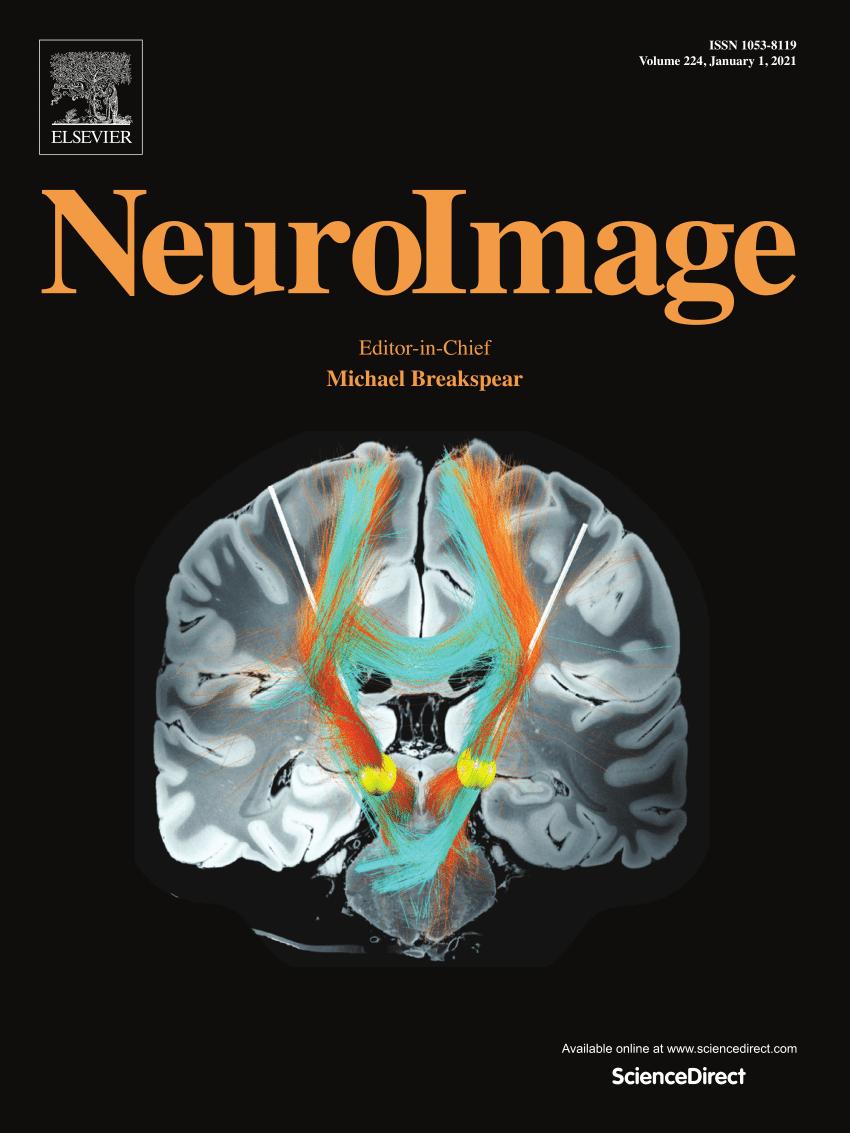Field strength dependence reveals multiple sources of relaxation anisotropy in single and crossing white matter fibers
IF 4.5
2区 医学
Q1 NEUROIMAGING
引用次数: 0
Abstract
Quantitative magnetic resonance imaging (MRI) parameters depend on the orientation of white matter fibers relative to the main magnetic field. However, the impacts of fiber complexity and field strength remain unclear.
This study investigated the effects of fiber complexity and field strength on the orientation dependency of the irreversible transverse relaxation rate R2, the effective transverse relaxation rate R2* and the reversible transverse relaxation rate R2’ (= R2* - R2) in the human brain. Nine healthy volunteers underwent MRI at 1.5 T and 3 T, allowing the assessment of orientation dependence in single and crossing fibers as well as the evaluation of field strength-dependent and -independent components.
All relaxation rates, except R2 at 1.5 T, differed significantly between single and crossing fibers. R2*, R2’, and their anisotropies were significantly higher at 3 T compared to 1.5 T. Both field strength-dependent and -independent components showed orientation dependence, exhibiting higher values for fibers perpendicular to the field. Notably, the field strength-independent component of R2* displayed a unique pattern, reaching a maximum at 45° and a minimum at 85°.
These findings suggest that both field strength-dependent and -independent components contribute to relaxation anisotropy in white matter, thereby indicating multiple sources of anisotropy. This study provides valuable insights into the complex relationship between white matter fiber orientation, field strength and quantitative MRI parameters, paving the way towards advanced understanding of white matter imaging.

场强依赖性揭示了单个和交叉白质纤维弛豫各向异性的多重来源。
定量磁共振成像(MRI)参数依赖于白质纤维相对于主磁场的方向。然而,纤维复杂性和场强的影响尚不清楚。本研究考察了纤维复杂性和电场强度对人脑不可逆横向弛豫率R2、有效横向弛豫率R2*和可逆横向弛豫率R2′(= R2* - R2)方向依赖性的影响。9名健康志愿者接受了1.5 T和3 T的MRI检查,评估了单纤维和交叉纤维的方向依赖性,以及场强依赖性和非场强依赖性成分。除了1.5 T时的R2外,所有弛豫速率在单纤维和交叉纤维之间都有显著差异。与1.5 T相比,在3 T时,R2*、R2'和它们的各向异性显著更高。场强相关和非场强相关的分量都表现出方向依赖性,垂直于场的纤维表现出更高的值。值得注意的是,R2*的场强无关分量呈现出独特的模式,在45°处最大,在85°处最小。这些发现表明,场强依赖性和非场强依赖性都有助于白质弛豫各向异性,从而表明各向异性的多重来源。该研究为白质纤维取向、场强和定量MRI参数之间的复杂关系提供了有价值的见解,为进一步了解白质成像铺平了道路。
本文章由计算机程序翻译,如有差异,请以英文原文为准。
求助全文
约1分钟内获得全文
求助全文
来源期刊

NeuroImage
医学-核医学
CiteScore
11.30
自引率
10.50%
发文量
809
审稿时长
63 days
期刊介绍:
NeuroImage, a Journal of Brain Function provides a vehicle for communicating important advances in acquiring, analyzing, and modelling neuroimaging data and in applying these techniques to the study of structure-function and brain-behavior relationships. Though the emphasis is on the macroscopic level of human brain organization, meso-and microscopic neuroimaging across all species will be considered if informative for understanding the aforementioned relationships.
 求助内容:
求助内容: 应助结果提醒方式:
应助结果提醒方式:


